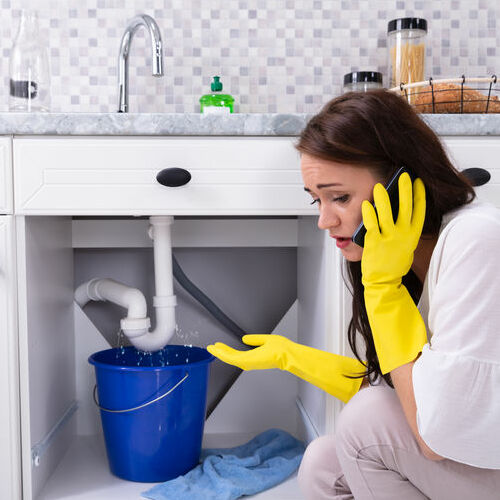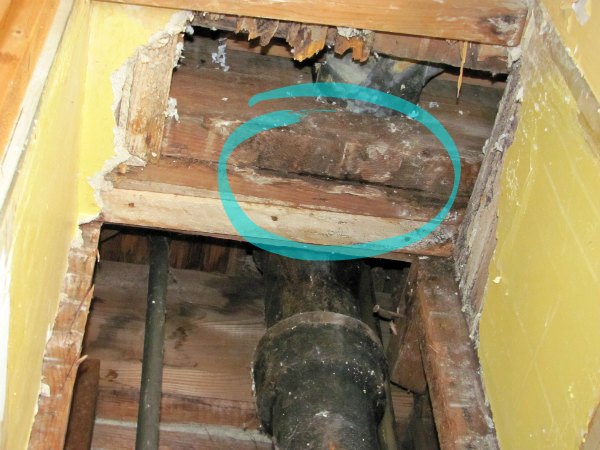A Homeowner’s Guide to Plumbing Issues in Older Homes
A Homeowner’s Guide to Plumbing Issues in Older Homes
Blog Article
Just how do you really feel on the subject of Common Plumbing Challenges In Old Buildings?

Older homes often feature appeal, personality, and history, yet they can also bring a host of pipes concerns. Whether you're managing maturing pipelines, low water pressure, or leaks, understanding how to address these common problems is crucial to maintaining a secure and useful home. In this overview, we'll discover the common plumbing difficulties faced by older homes and provide useful services to keep your plumbing in top form.
Recognizing Usual Pipes Concerns
Aging Pipelines
Among one of the most typical problems in older homes is aging pipes. Depending on the period in which your home was constructed, the pipelines may be made from materials that have deteriorated gradually, such as galvanized steel, cast iron, and even lead. These materials can corrode, come to be breakable, or develop leakages, resulting in water damage and potential health hazards.
Low Water Pressure
If you're experiencing low water pressure, it could be due to mineral deposits, corrosion inside the pipelines, or old components that are no more operating successfully. This can be a significant trouble, particularly in areas like showers and sinks.
Leaking Pipes
Leaks are an additional constant concern in older homes, commonly brought on by rusty or worn-out pipes. Even tiny leakages can cause considerable water damage, mold development, and enhanced water bills otherwise dealt with promptly.
Out-of-date Fixtures
Obsolete plumbing fixtures such as taps, toilets, and showerheads not just look old however might likewise be less reliable, prone to leakages, or incompatible with modern-day pipes standards.
Pipeline Corrosion
Deterioration is a common trouble in older pipes, specifically those made from galvanized steel or cast iron. Rusty pipes can limit water flow, create discoloration, and at some point result in leakages or pipe ruptureds.
Evaluating the Problem of Your Plumbing
Evaluating Visible Pipelines
Start by checking any noticeable pipes in your home, such as those in cellars, crawl spaces, or under sinks. Search for indicators of rust, leakages, or rust, which can suggest underlying issues.
Checking for Leakages
Check for leakages by evaluating areas around taps, toilets, and under sinks. You can likewise check your water meter before and after a duration of no water make use of to spot surprise leaks.
Water High Quality Screening
Older pipes can impact the top quality of your water. Conduct a water quality examination to check for pollutants such as lead, corrosion, or other pollutants that might be introduced by aging pipelines.
Solutions for Usual Plumbing Problems
Changing Aging Pipelines
If your home has old, weakening pipelines, take into consideration replacing them with contemporary products like copper or PEX. This can be a substantial investment, however it will certainly protect against future issues and enhance the safety and security and integrity of your plumbing system.
Repairing Low Water Stress
To repair low water pressure, begin by cleansing or replacing old components and removing mineral accumulation in the pipelines. If the problem continues, it might be necessary to replace areas of corroded pipes.
Fixing and Changing Leaking Pipelines
For tiny leaks, you can utilize pipeline clamps or epoxy putty as a temporary fix. Nevertheless, it's ideal to change leaking pipelines totally to avoid further damages.
Updating Fixtures
Upgrading old fixtures to modern-day, water-efficient versions can improve your home's plumbing efficiency and lower water consumption. Search for fixtures with the WaterSense label for the best effectiveness.
Taking Care Of Pipe Corrosion
If your pipes are corroded, replacing them with corrosion-resistant materials like copper, PVC, or PEX is the most effective option. Normal inspections and water top quality upkeep can help avoid even more rust.
When to Call a Specialist
While some pipes concerns can be handled with DIY services, there are times when it's finest to contact a specialist. If you're managing significant leaks, comprehensive corrosion, or are unsure about the problem of your pipelines, an accredited plumbing technician can give experienced analysis and repair service.
Preventive Upkeep Tips
Normal Assessments
Consistently evaluate your pipes system for indications of wear and tear. Catching concerns early can stop expensive repairs down the line.
Water Stress Guideline
Ensure your water stress is within the suggested variety to avoid stressing your pipes and components. A plumbing professional can mount a stress regulator if needed.
Water Top Quality Upkeep
Set up water filters or softeners if your water top quality is poor. This can secure your pipes and components from damage brought on by difficult water or pollutants.
Proactive Pipe Substitute
If your home has older pipes, consider aggressive replacement before significant issues emerge. This can save you from emergency situation repair services and water damage.
Verdict
Handling pipes problems in older homes calls for a mix of vigilance, precautionary maintenance, and timely upgrades. By understanding the typical challenges and understanding when to seek expert help, you can guarantee your plumbing system stays functional and reputable for several years to come.
Common Plumbing Issues in Older Homes and How to Fix Them
Owning an older home in Australia comes with its unique charm and a set of challenges, especially when it comes to plumbing. The Sunshine Coast has many older properties that can harbour plumbing problems that aren t just inconvenient but potentially costly. Here s a look at some common plumbing issues in older homes and expert advice on how to handle them.
Outdated Piping Materials
Many older homes were built with galvanised steel, cast iron, or even lead pipes, materials that are far from ideal by today s standards. Galvanised pipes are prone to corrosion and clogging, while lead pipes pose serious health risks.
How to Fix:
Replacing old pipes is a job for a professional. Upgrading to copper or PVC piping not only enhances water quality and flow but also increases the property s safety and value. If you suspect your home has outdated materials, a licensed plumber can conduct a thorough inspection and recommend the best course of action.
Corrosion and Pipe Degradation
Over time, exposure to water and minerals can cause pipes to corrode, leading to leaks, bursts, and water contamination. Corrosion is especially common in homes over 50 years old.
How to Fix:
Regular inspections can catch early signs of corrosion. If corrosion is found, the affected section of piping often needs to be replaced. For homes with extensive corrosion, a complete plumbing overhaul might be necessary. It s crucial to consult with a plumbing expert to understand the extent of the issue.
Tree Root Intrusion
Older neighbourhoods usually have mature trees whose roots can intrude into pipe lines, causing blockages or damage. This is particularly problematic for sewer lines, where roots seek out water sources.
How to Fix:
A plumber can use a specialised camera to inspect sewer lines for root intrusion. If roots are a problem, methods like root cutting or hydro-jetting can clear the obstruction. In severe cases, part of the pipe may need replacing. Consider root barriers around the piping to prevent future issues.
Inadequate Water Pressure
Low water pressure in older homes can be due to various factors, including corroded water lines, sediment build-up in pipes, or outdated fixtures.
How to Fix:
First, check if the low pressure is isolated to one area or throughout the house. Replacing old fixtures can sometimes resolve the issue. However, if the problem is more widespread, it might be due to sediment or corrosion. Flushing the system or replacing the affected pipes usually restores normal pressure. Again, a professional assessment is advisable.
Outdated Fixtures
Older homes often feature fixtures that are not only visually dated but functionally inefficient. This includes everything from toilets and taps to showerheads and washing machine hoses.
How to Fix:
Updating these fixtures can improve both water efficiency and the aesthetic appeal of your home. Modern fixtures are designed to conserve water, which can significantly reduce your water bill and lessen your environmental impact.
Conclusion
Maintaining the plumbing in an older home requires a proactive approach. Regular checks and updates are key to preserving these beautiful properties. If you re facing plumbing issues in your older home, it s best to call on experienced professionals like Green & Gold Plumbing & Gas. With the right expertise, even the most daunting plumbing problems can be resolved, ensuring that your home s character is maintained while its functionality is enhanced.
https://gandgplumbing.com.au/common-plumbing-issues-in-older-homes-and-how-to-fix-them/

I hope you enjoyed our topic about Common Plumbing Problems in Older Homes. Thank you for taking a few minutes to read our article. I beg you take the time to share this blog post if you liked it. Thanks for taking the time to read it.
Order Repair Report this page